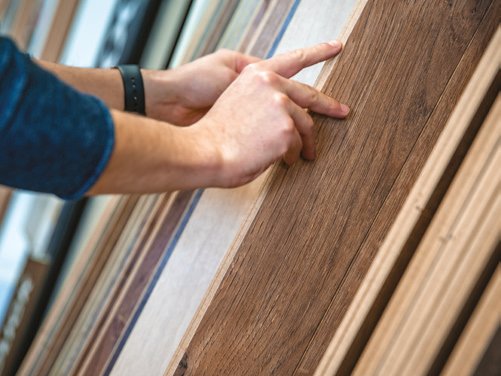As a trade professional, you know that the right flooring can make all the difference in a room.
One type of flooring that has become increasingly popular in recent years is laminate flooring. Laminate flooring is a synthetic material that can mimic the look of hardwood, but at a fraction of the cost. In this blog post, we'll discuss some of the benefits of laminate flooring and give you some tips on how to install it successfully.
Benefits of Laminate Flooring
One of the main benefits of laminate flooring is its durability. It is scratch-resistant, which makes it ideal for busy homes or commercial areas, depending on the specification of the product used. Additionally, laminate flooring is relatively easy to clean and maintain, which is another reason why it has become a popular choice for homeowners.
Another benefit of laminate flooring is that it's quick to install for an experienced professional. Laminate flooring is a "floating" floor, which means it can be installed over an existing smooth and level floor without the need for adhesives. All that’s usually needed is the removal of any existing flooring and the installation of a suitable underlay/moisture barrier. This makes installation quicker and easier, which is great news for floorlayers who want to complete a project efficiently.
Compared to most other wood or wood effect floor coverings it is also extremely cost effective and is available in a variety of specifications, some being suitable for busy commercial areas.

Tips for Installing Laminate Flooring
Before you begin installing laminate flooring, it's important to prepare the area properly. This includes removing any old flooring, cleaning the subfloor, and making sure it's level. It's also important to acclimate the laminate flooring to the room's temperature and humidity for at least 48 hours before installation.
When installing the laminate flooring, be sure to leave a small gap around the edges of the room to allow for expansion. Refer to the manufacturer’s installation instructions for guidance on expansions gaps. You'll also want to stagger the seams of the planks to create a more natural look. Use spacers to maintain a consistent gap between the planks and the wall and be sure to use the appropriate underlayment to reduce noise and add insulation. If skirtings are already in place a suitable decorative beading or scotia can be used to mask the expansion gap. These can be ‘painted in’ or self-coloured to match the floor or skirting.
Finally, be sure to use the right tools for the job. A saw with a fine-toothed blade is best for cutting laminate flooring, and a tapping block and hammer will help you fit the planks together snugly. A laminate cutter can also be useful for cutting planks to length.
In conclusion, laminate flooring is a great option for homeowners and others who want the look of hardwood without the high cost. As a floorlayer, knowing how to install laminate flooring properly can expand your skill set and make you more valuable to clients. With the right tools and techniques, you can successfully install laminate flooring and provide your clients with a beautiful, durable floor that they will enjoy for years to come.